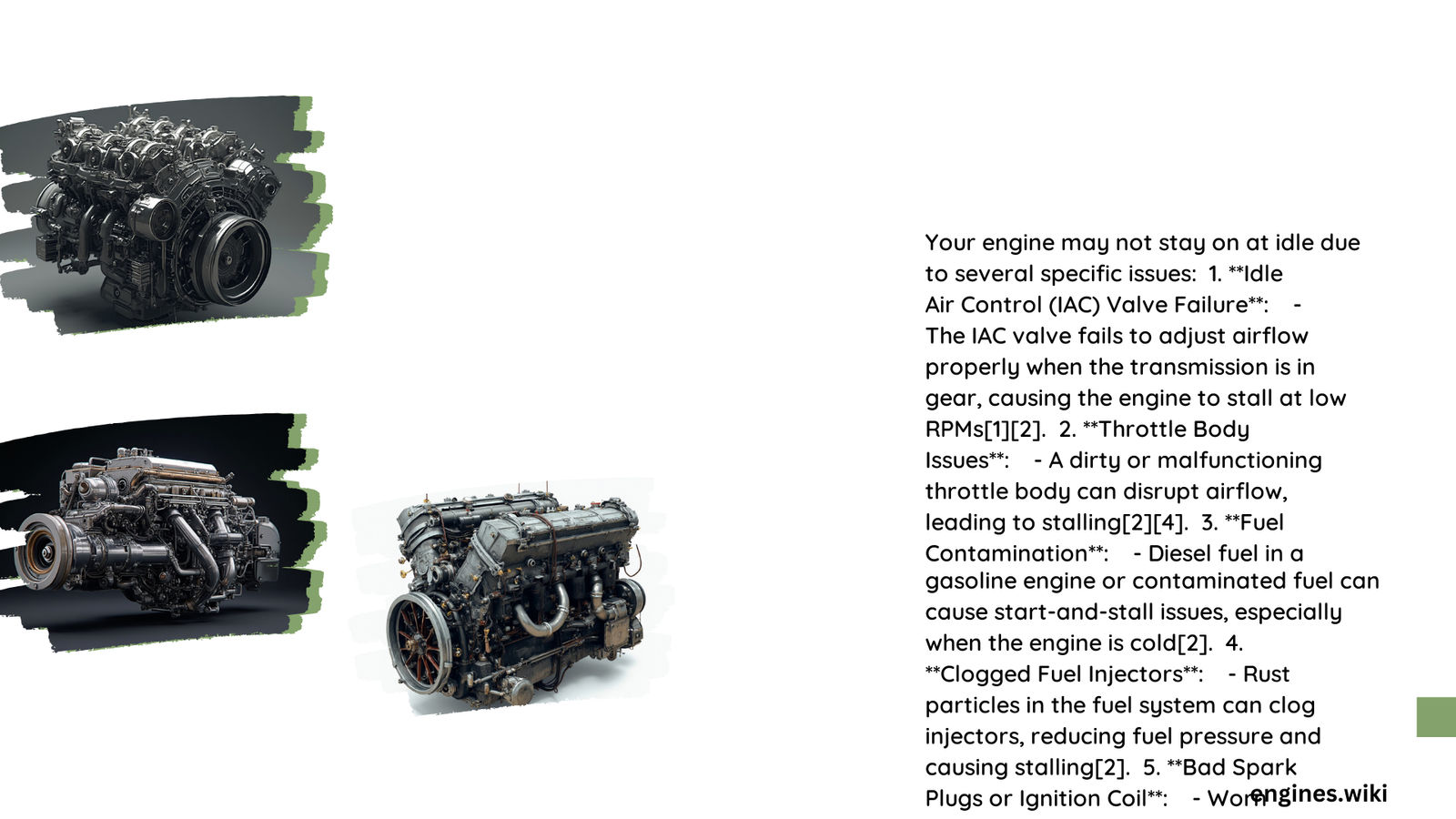When your engine struggles to maintain idle, it’s a frustrating and potentially dangerous situation that can stem from multiple complex mechanical issues. An unstable idle might indicate underlying problems with fuel delivery, vacuum systems, or critical engine control components. Understanding these potential causes is crucial for diagnosing and resolving the issue before it leads to more significant engine damage or unexpected vehicle breakdown.
What Causes Engine to Struggle at Idle?
How Do Fuel Delivery Problems Affect Engine Idle?
Fuel delivery issues represent a primary reason why engines fail to maintain idle stability. Several critical components can disrupt the delicate balance of fuel and air mixture:
Fuel Filter Blockage
- Symptoms: Intermittent stalling
- Impact: Restricts fuel flow
- Recommended Action: Replace every 50,000 miles
| Component | Potential Issue | Diagnostic Method |
|---|---|---|
| Fuel Filter | Clogging | Pressure test |
| Fuel Injectors | Dirt accumulation | Visual inspection |
| Fuel Pump | Reduced pressure | Electrical diagnostic scan |
Why Do Vacuum Leaks Cause Idle Instability?
Vacuum leaks introduce unmetered air into the engine system, disrupting the precise air-fuel ratio required for stable operation. Key indicators include:
- Hissing sounds near intake manifold
- Fluctuating idle RPM
- Increased engine speed during idle
What Role Does the Idle Air Control Valve Play?
The Idle Air Control (IAC) valve is a critical component that manages air intake during idle conditions. When malfunctioning, it can cause:
- Erratic idle speeds
- Engine stalling
- Unpredictable RPM fluctuations
Diagnostic Steps for Resolving Idle Issues
Comprehensive Troubleshooting Approach
- Initial Visual Inspection
- Check vacuum hoses for cracks
- Examine fuel injectors
-
Inspect IAC valve connections
-
Advanced Diagnostic Techniques
- Use professional diagnostic scanner
- Perform fuel pressure test
- Conduct smoke test for vacuum leaks
Technical Specifications for Idle Stability
Ideal Idle Parameters:
– RPM Range: 600-1000 RPM
– Vacuum Pressure: 15-20 inHg
– Fuel Pressure: 30-50 PSI
Professional Recommendations
- Regular maintenance prevents most idle issues
- Address problems immediately to avoid extensive engine damage
- Consult professional mechanic for complex diagnostics
Conclusion

Resolving why an engine won’t stay on at idle requires systematic diagnosis, understanding of complex automotive systems, and precise technical intervention. By methodically examining fuel delivery, vacuum systems, and engine control components, you can effectively restore your vehicle’s idle stability.
